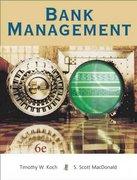Question
1. Consider the cost function of a monopolist: C(Q) = 25 + Q +Q^2 a) Calculate average cost and marginal cost. b) Represent graphically the
1. Consider the cost function of a monopolist: C(Q) = 25 + Q +Q^2 a) Calculate average cost and marginal cost. b) Represent graphically the above cost curves. c) The (inverse) demand faced by the monopolist is given by p = 31 4Q. Calculate the equilibrium quantity and price set by the monopolist. d) How much profit would she make in equilibrium? Represent graphically. 2. ElecVal is the only electricity supplier in Valencia. The demand for electricity is Q = 405 0.25P, where Q is hundreds of MGw hour and p the price per MGw hour. The total cost function is given by TC(Q) = 37500 + 20Q. a) Calculate the unregulated monopoly equilibrium (price, quantity and profits). Represent graphically. b) A government regulatory agency is interested in increasing consumer surplus. It considers two regulatory measures: imposing a price equal to marginal cost and imposing a price equal to average cost. Calculate equilibrium quantity under each measure. Represent graphically. Which measure entails a higher welfare? Which one is preferred by consumers? And which by Elecval? 3. Agua de Benassal and Agua de Bejs are the only producers of bottled mineral water in the province of Castelln. This unique product is sold in a market where the inverse demand curve is p= 200 2Q, where Q = Q1 + Q2. The cost functions of both firms are identical and given by C(Q1) = 4Qi, i=1,2. The managers of each firm must decide on their outputs on Monday morning and then bring products to market by noon. a) What is each firm's marginal revenue? What is marginal cost? b) Equate each firm's marginal revenue to marginal cost. c) Use your result in part (b) to solve for each firm's reaction function. d) Use your results in part (c) to solve for the Cournot equilibrium levels of output for each firm. Represent in reaction function space. 4. Suppose that the US airline market has three airlines, American Airlines, United Airlines and Continental Airlines. The market inverse demand curve is given by p = 339 Q, where Q is passenger traffic (in thousands) and p is the (average) ticket fare. The marginal cost is assumed constant at $147 per passenger. a) Calculate the Cournot equilibrium (equilibrium price, passenger traffic and profit). b) Now UA and Continental merge and hold the same cost function as did the original firms. Calculate the Cournot equilibrium under duopoly. c) Is the merger profitable for UA and Continental? d) Suppose now that the merged firm was able to realize a cost advantage that allows her to reduce marginal cost down to 138$. Would the merger be profitable?
Step by Step Solution
There are 3 Steps involved in it
Step: 1

Get Instant Access to Expert-Tailored Solutions
See step-by-step solutions with expert insights and AI powered tools for academic success
Step: 2

Step: 3

Ace Your Homework with AI
Get the answers you need in no time with our AI-driven, step-by-step assistance
Get Started


